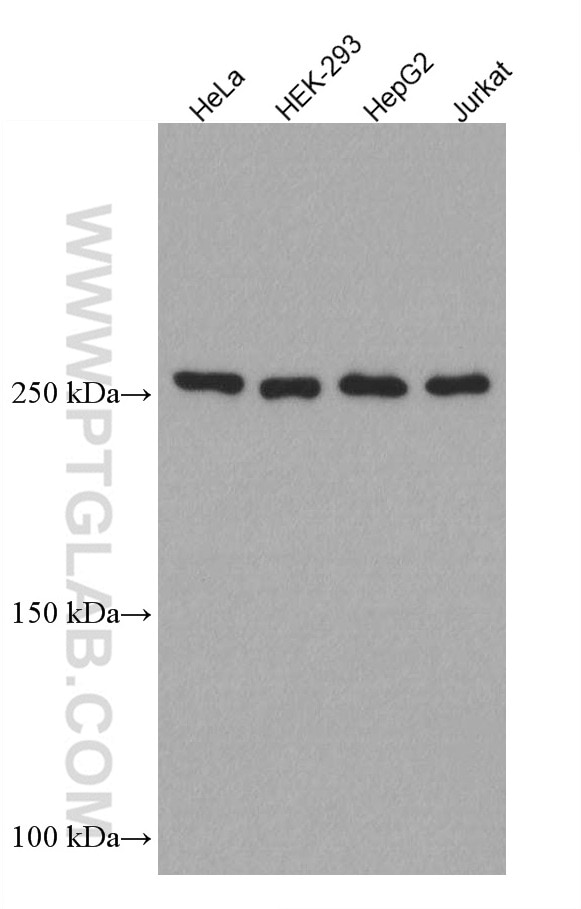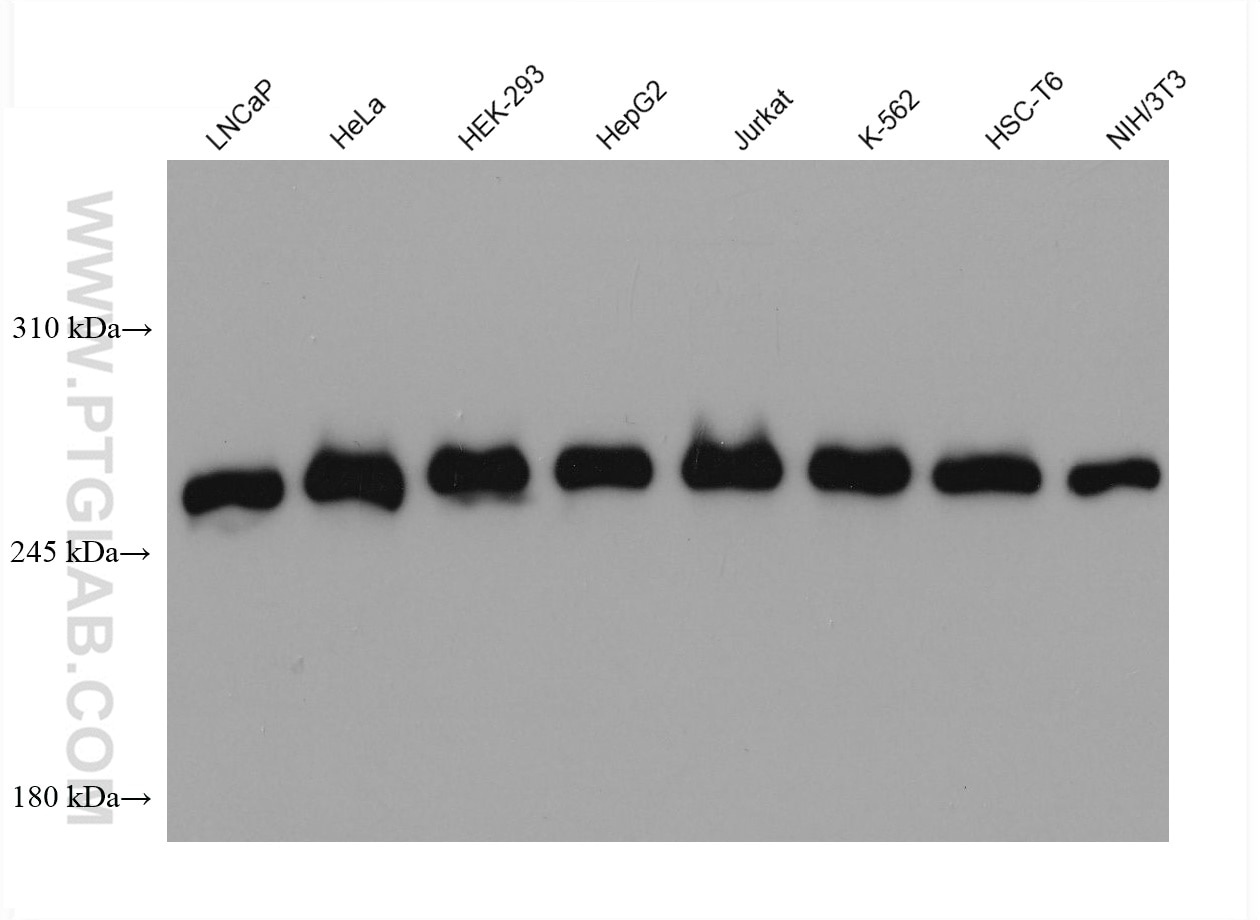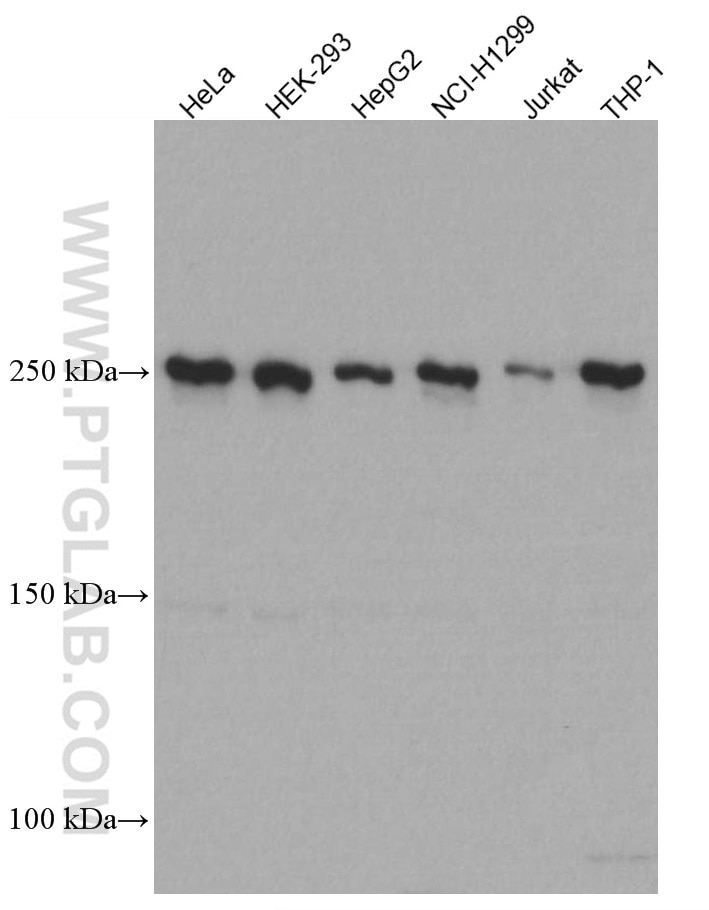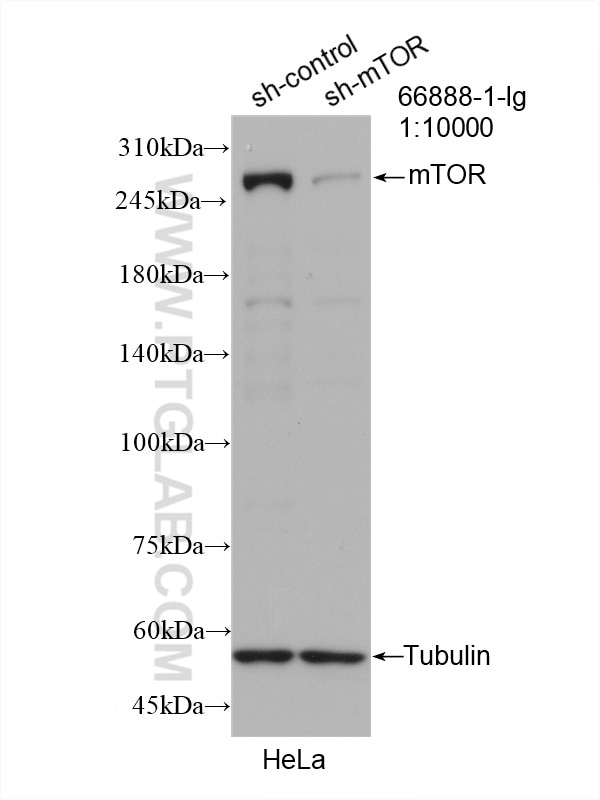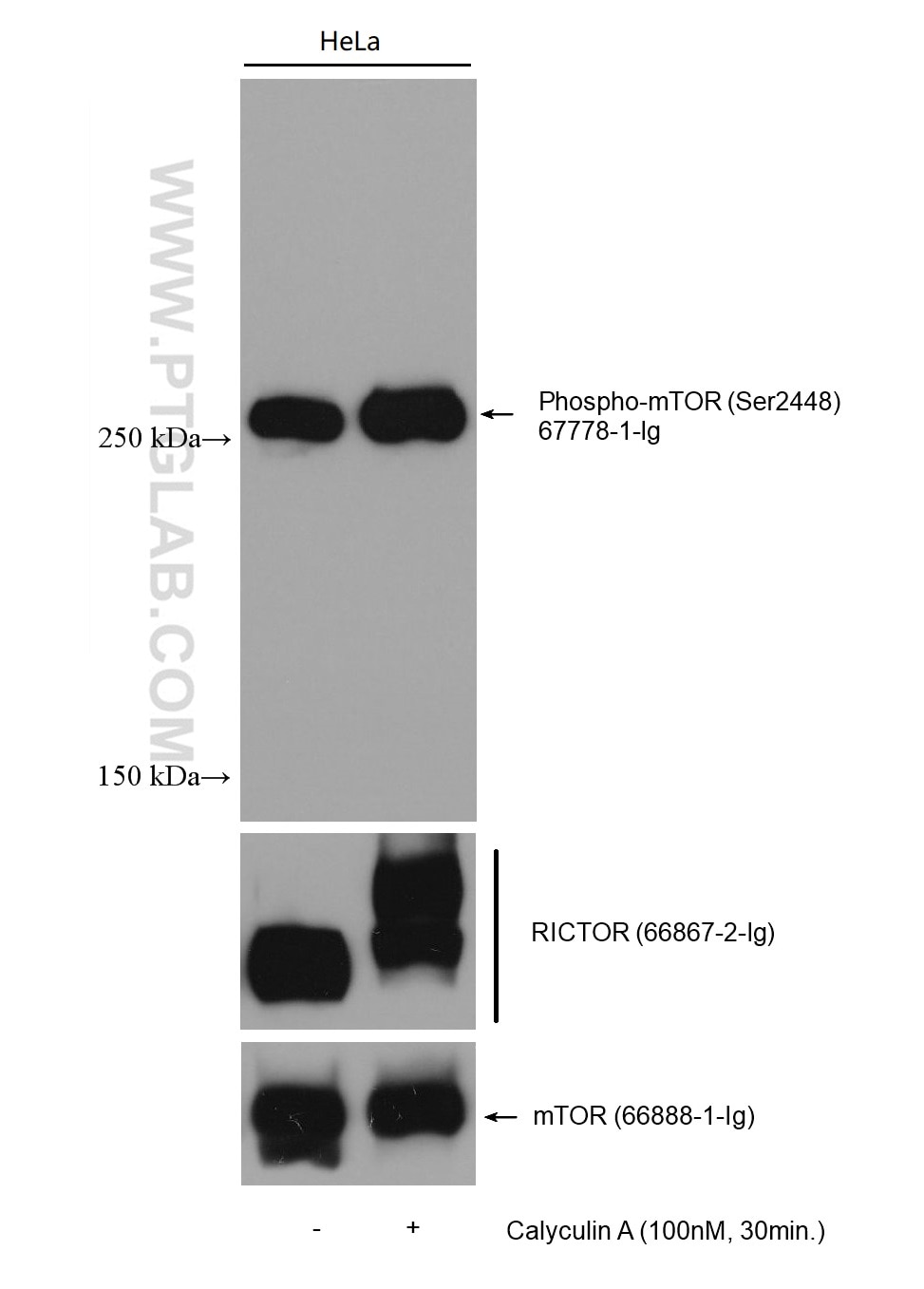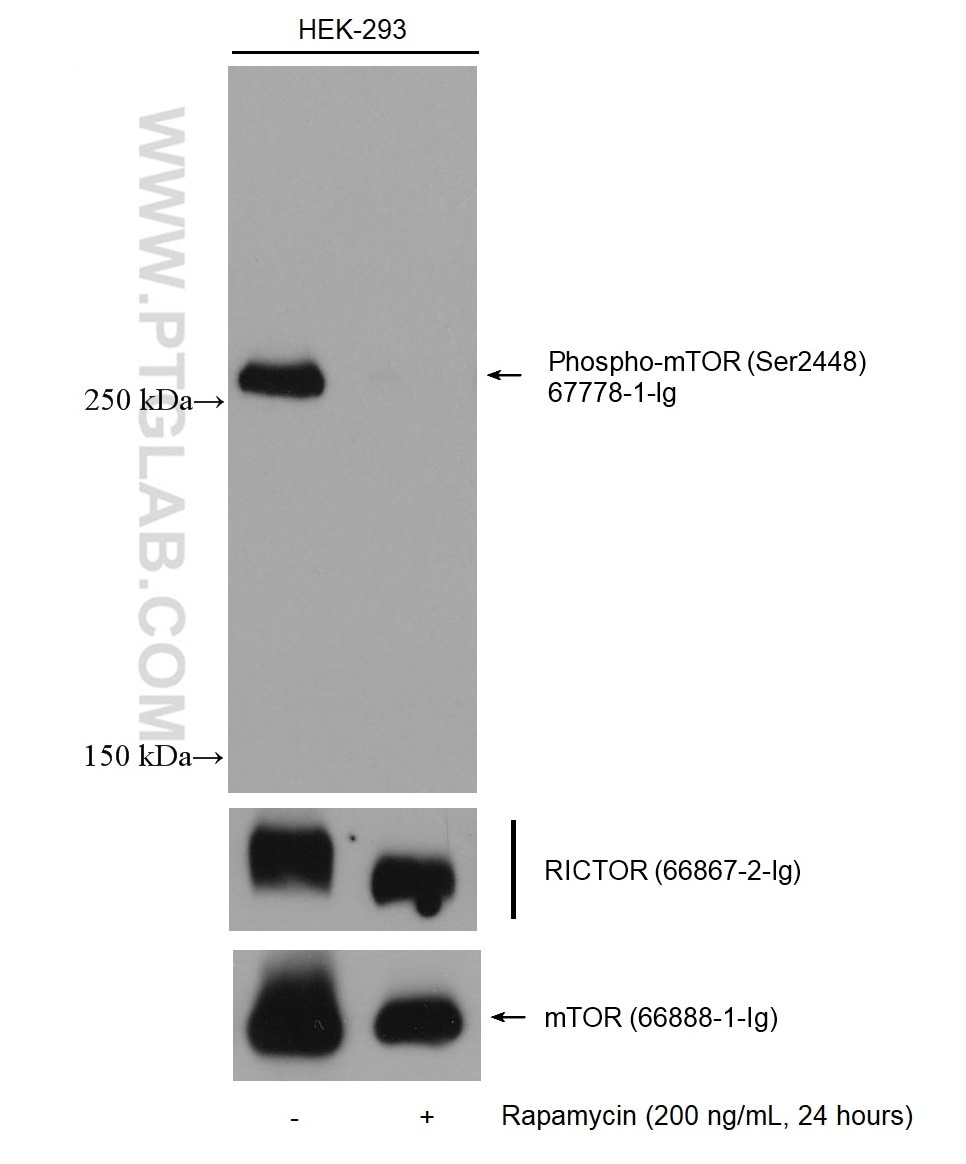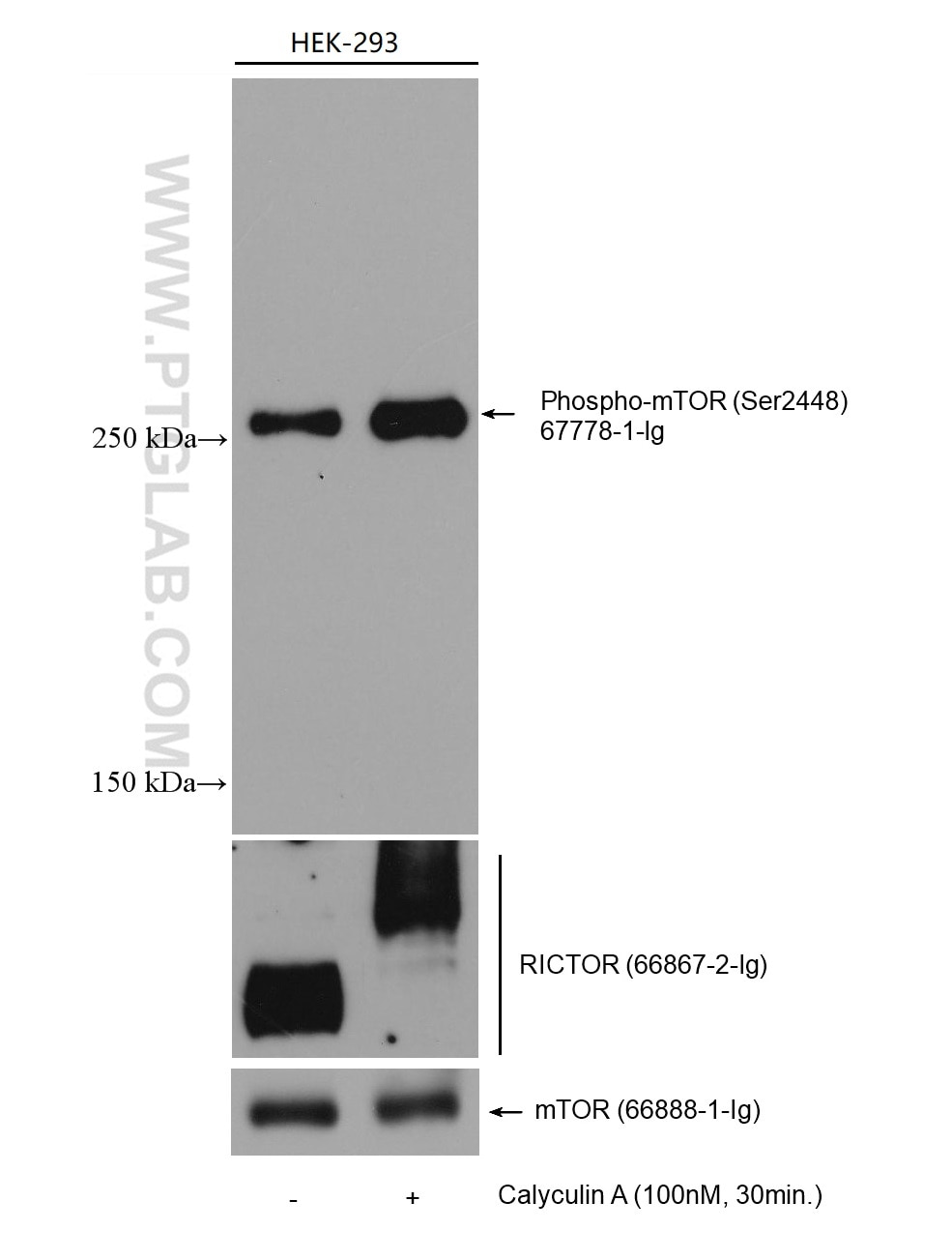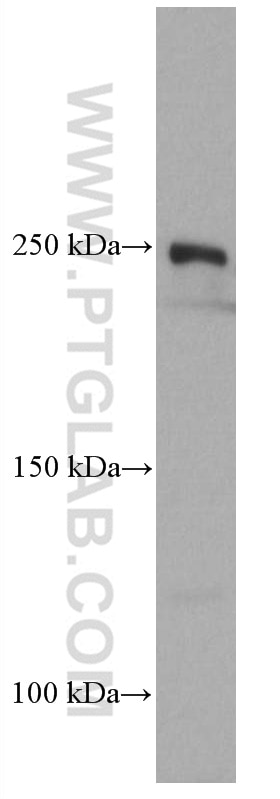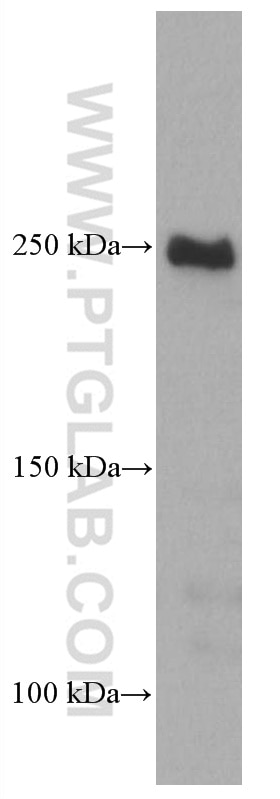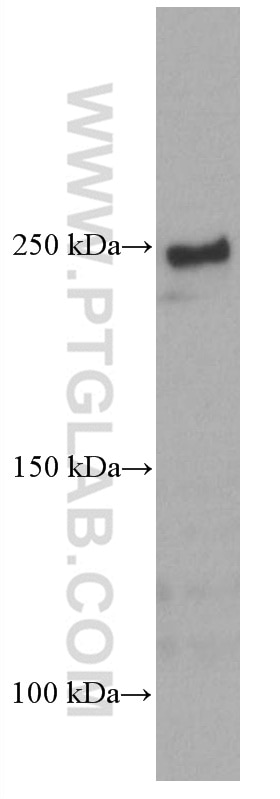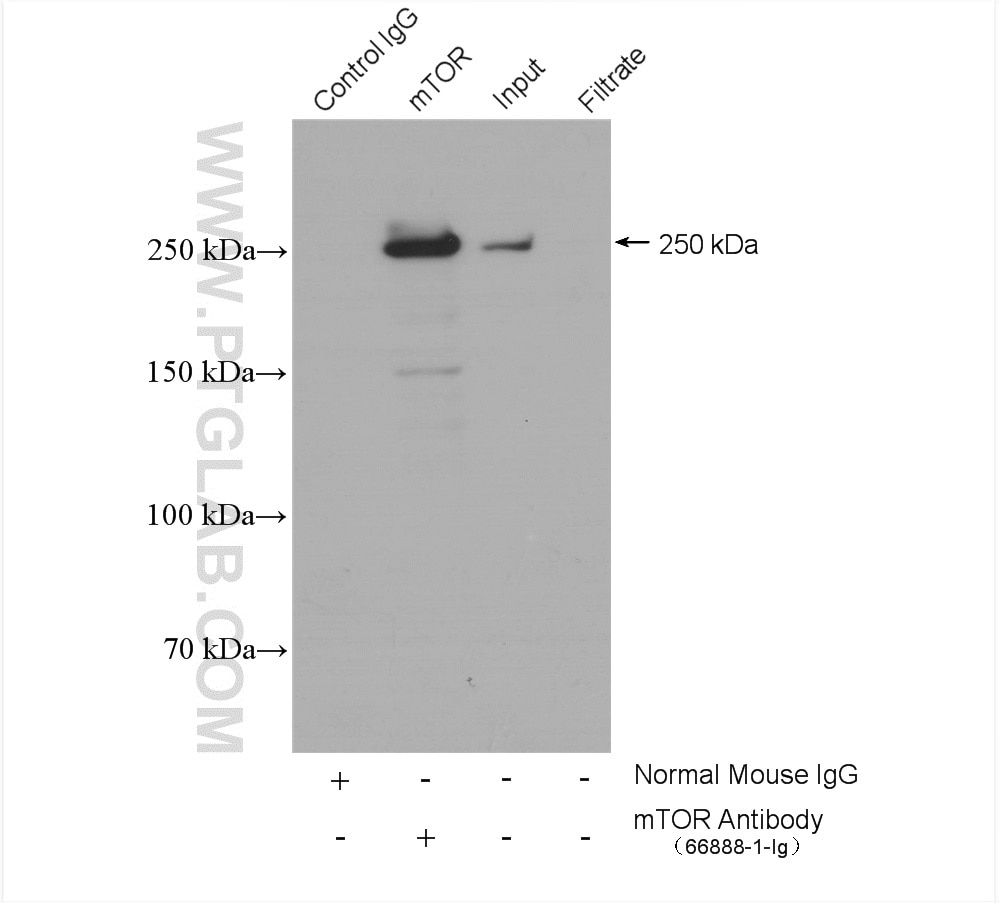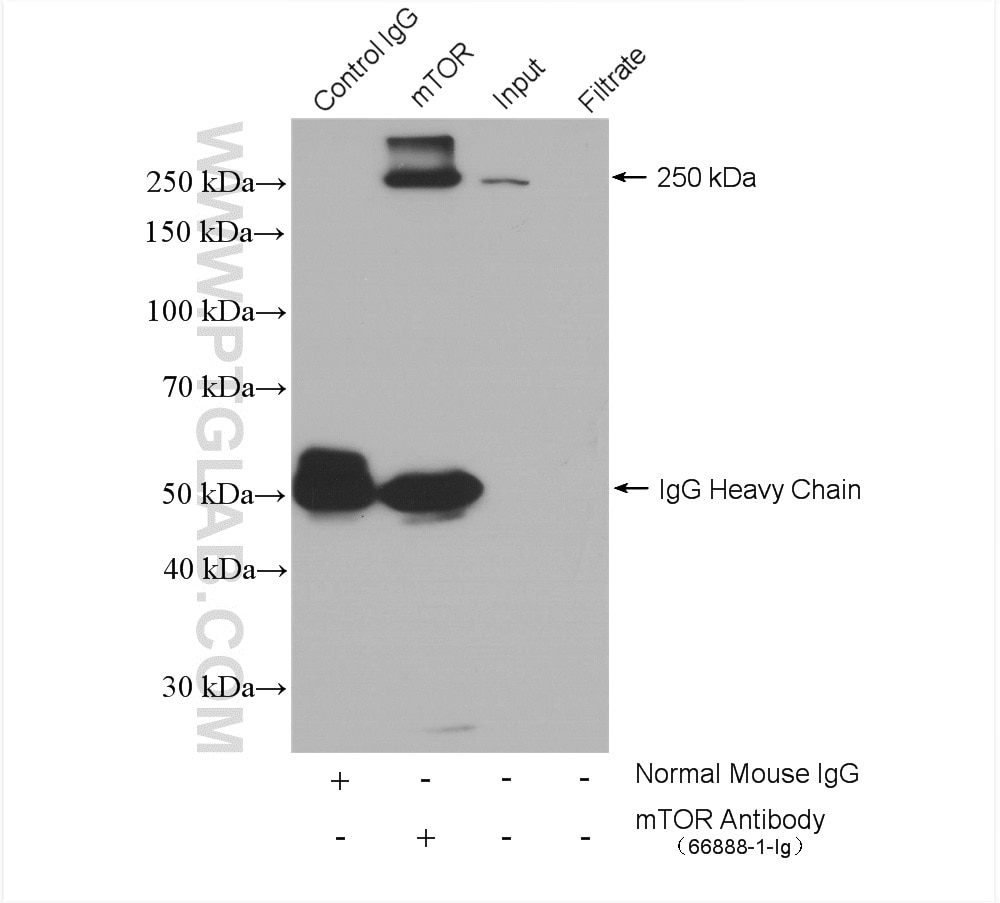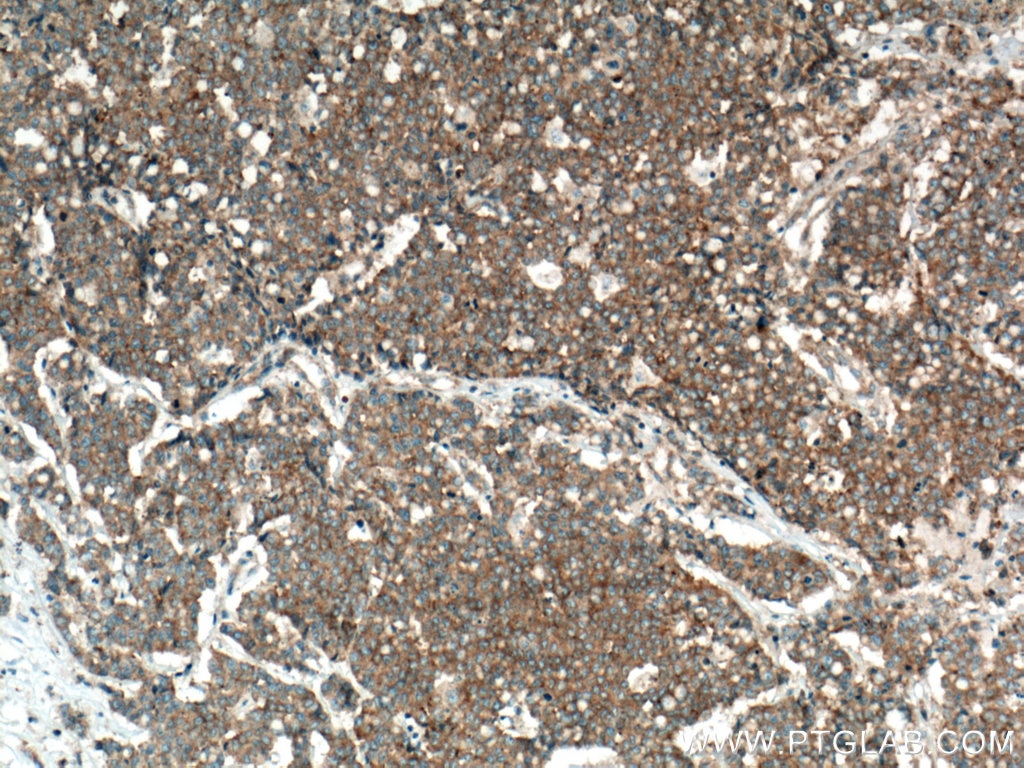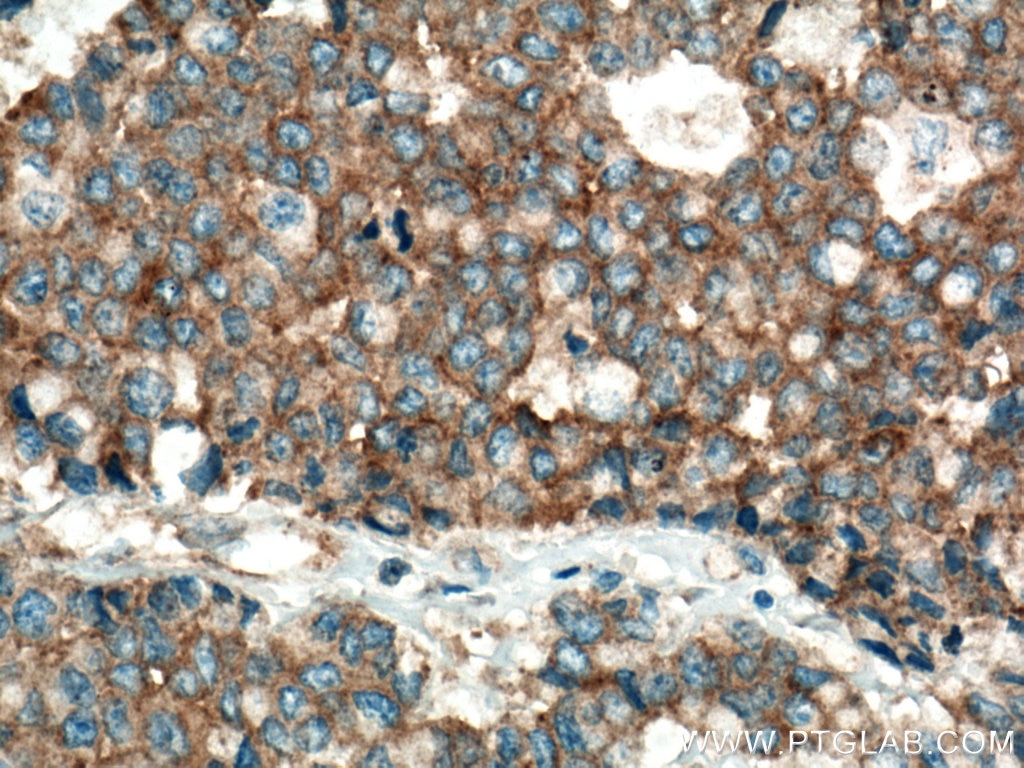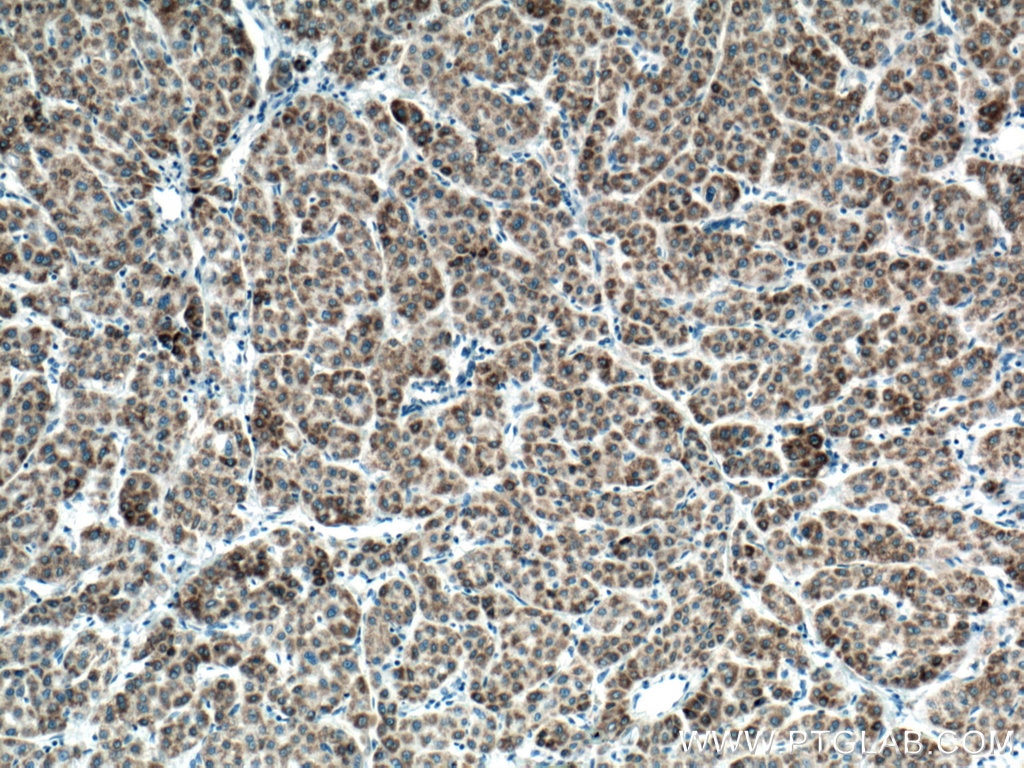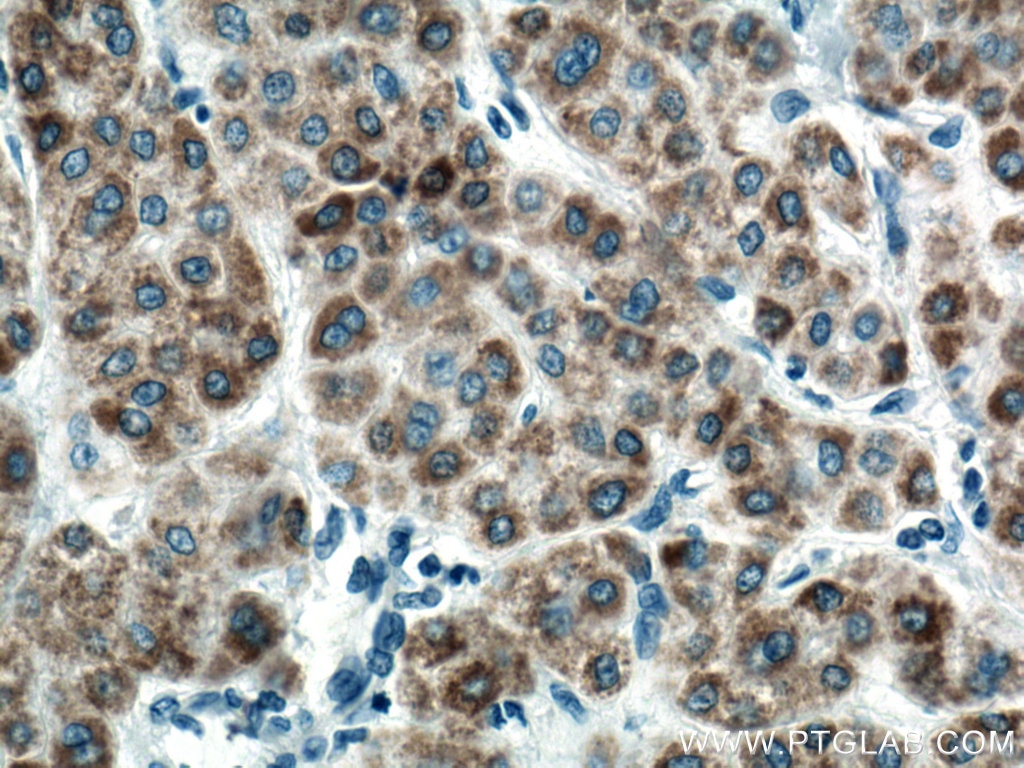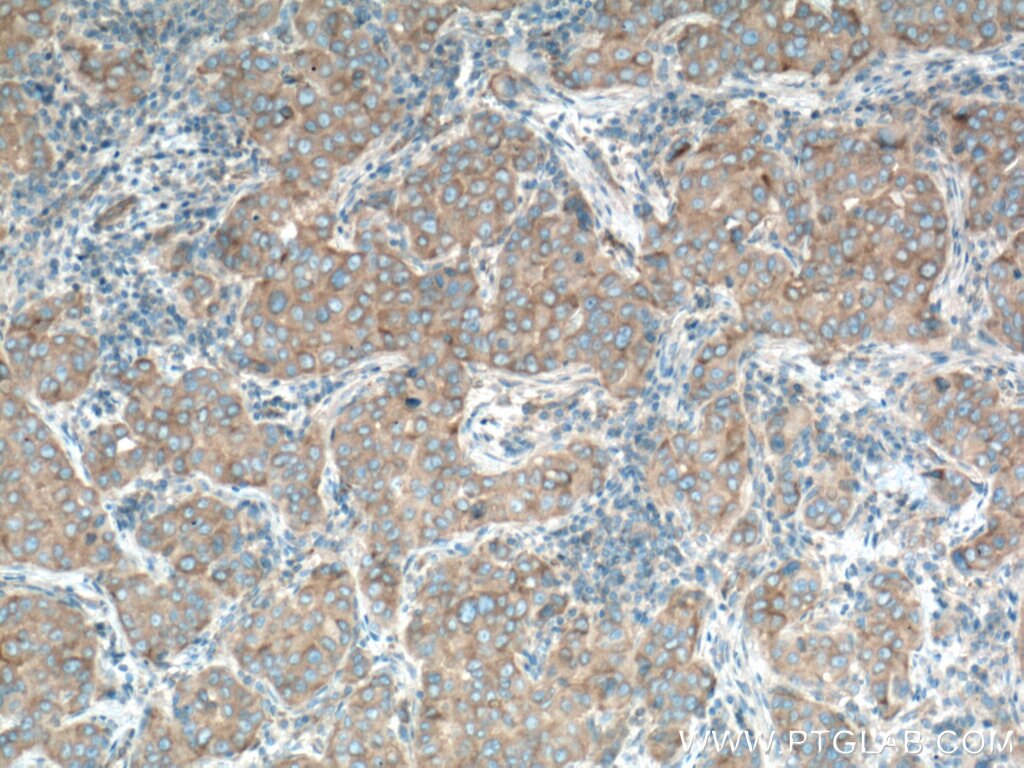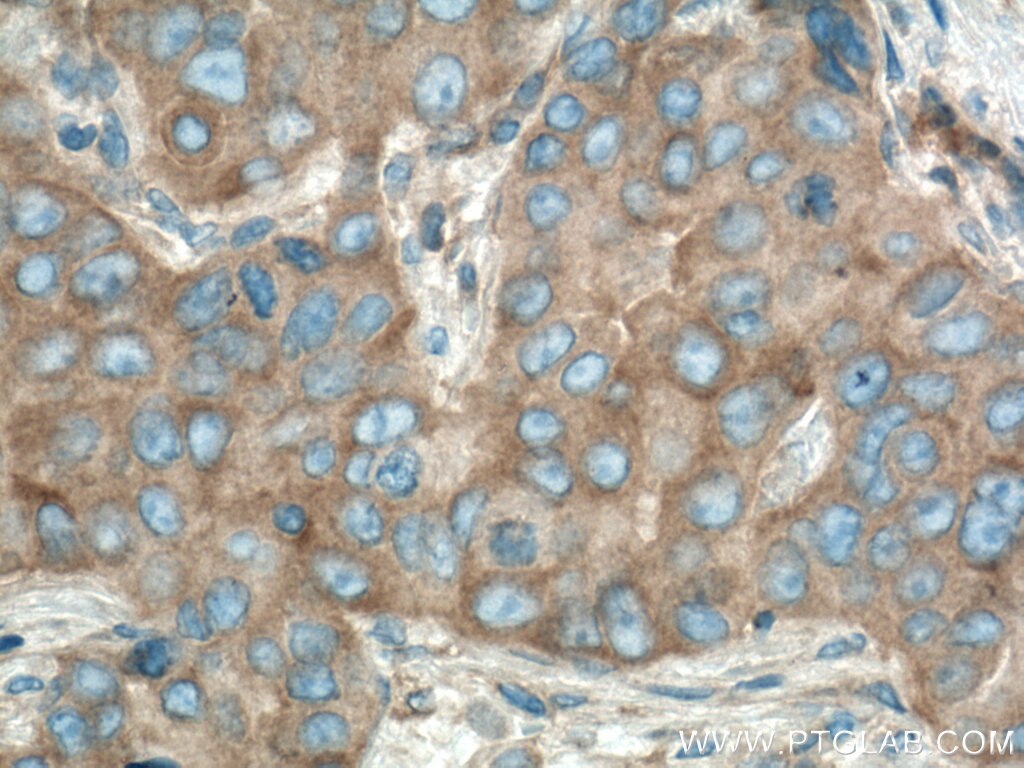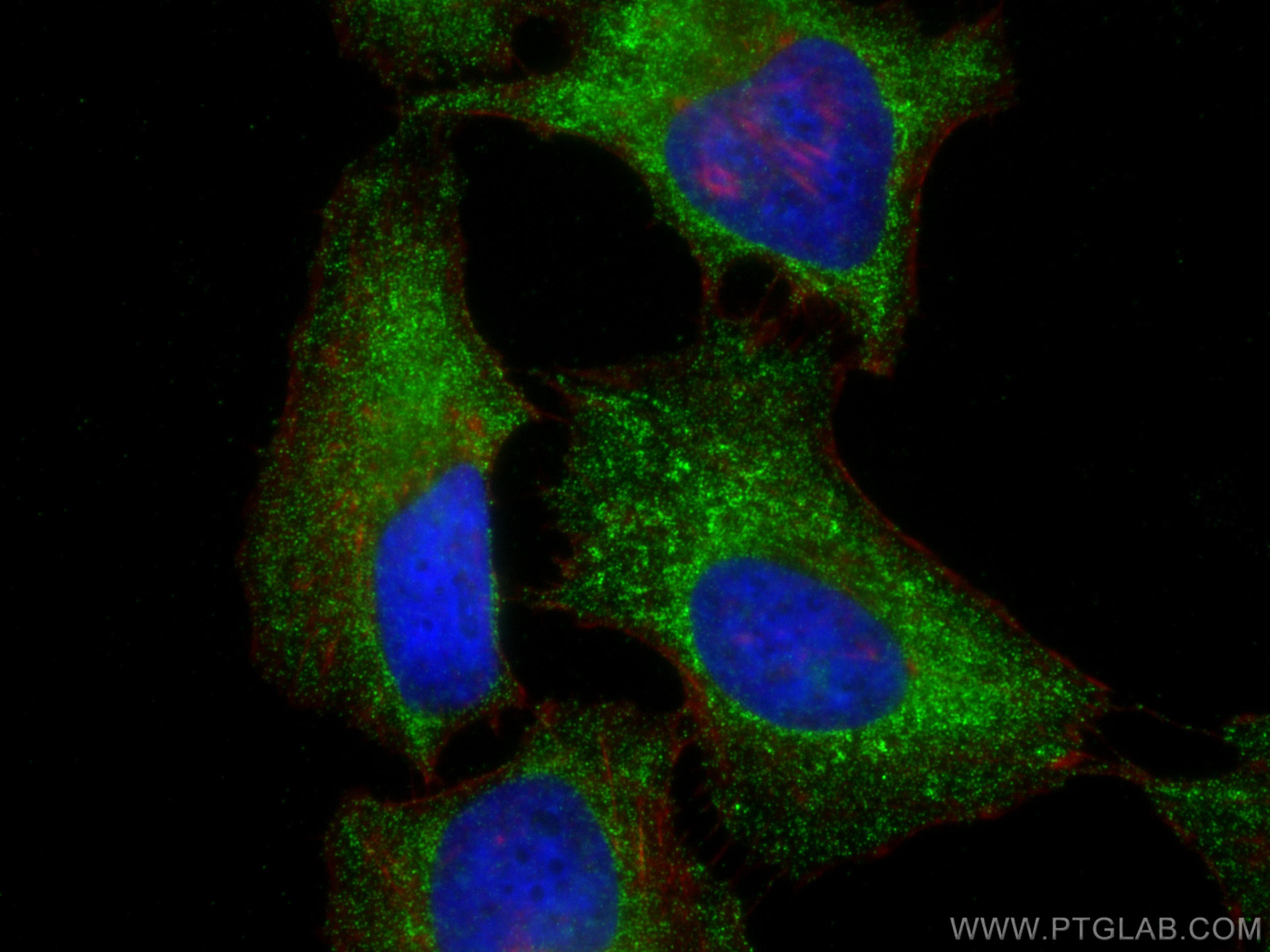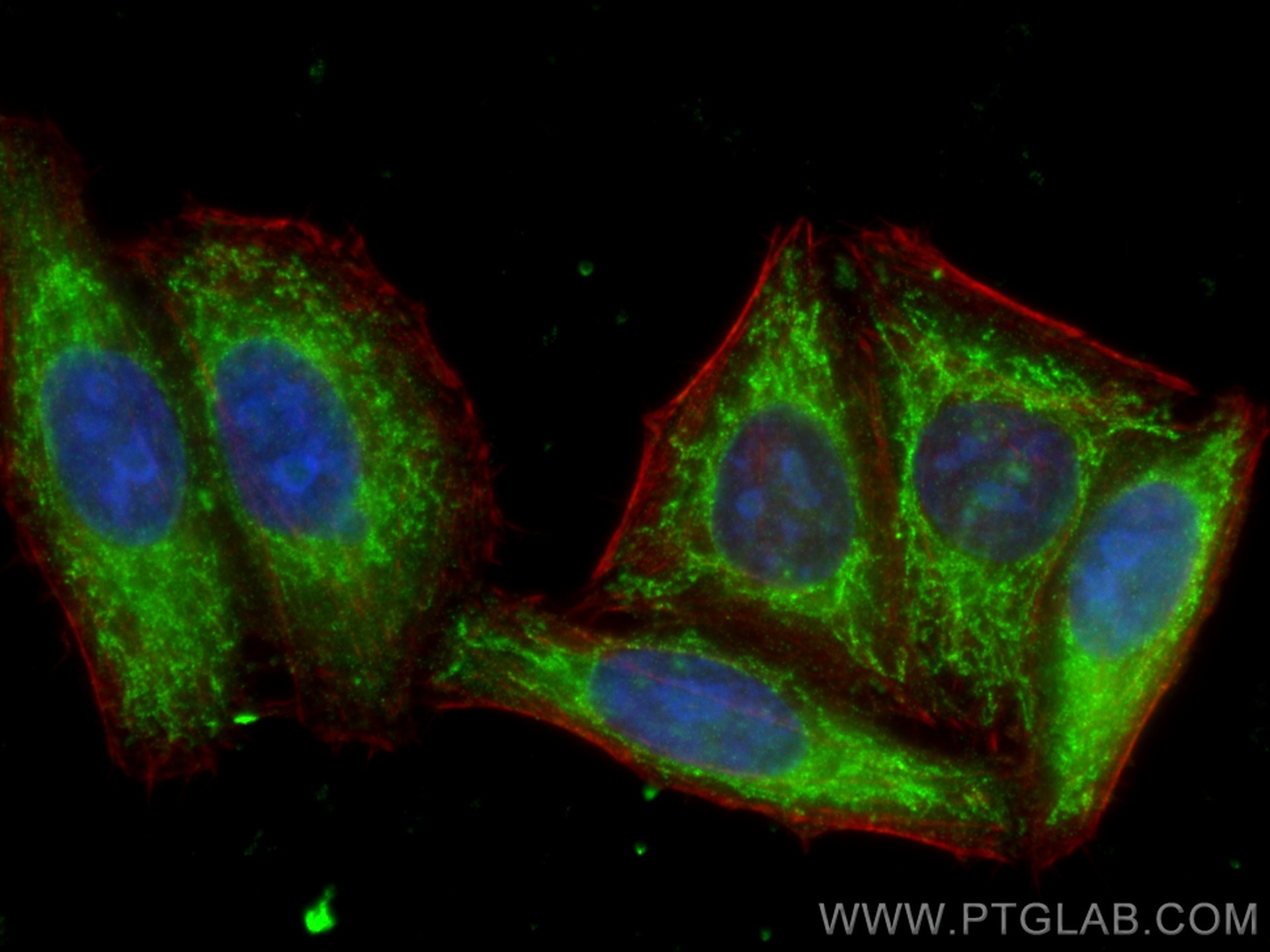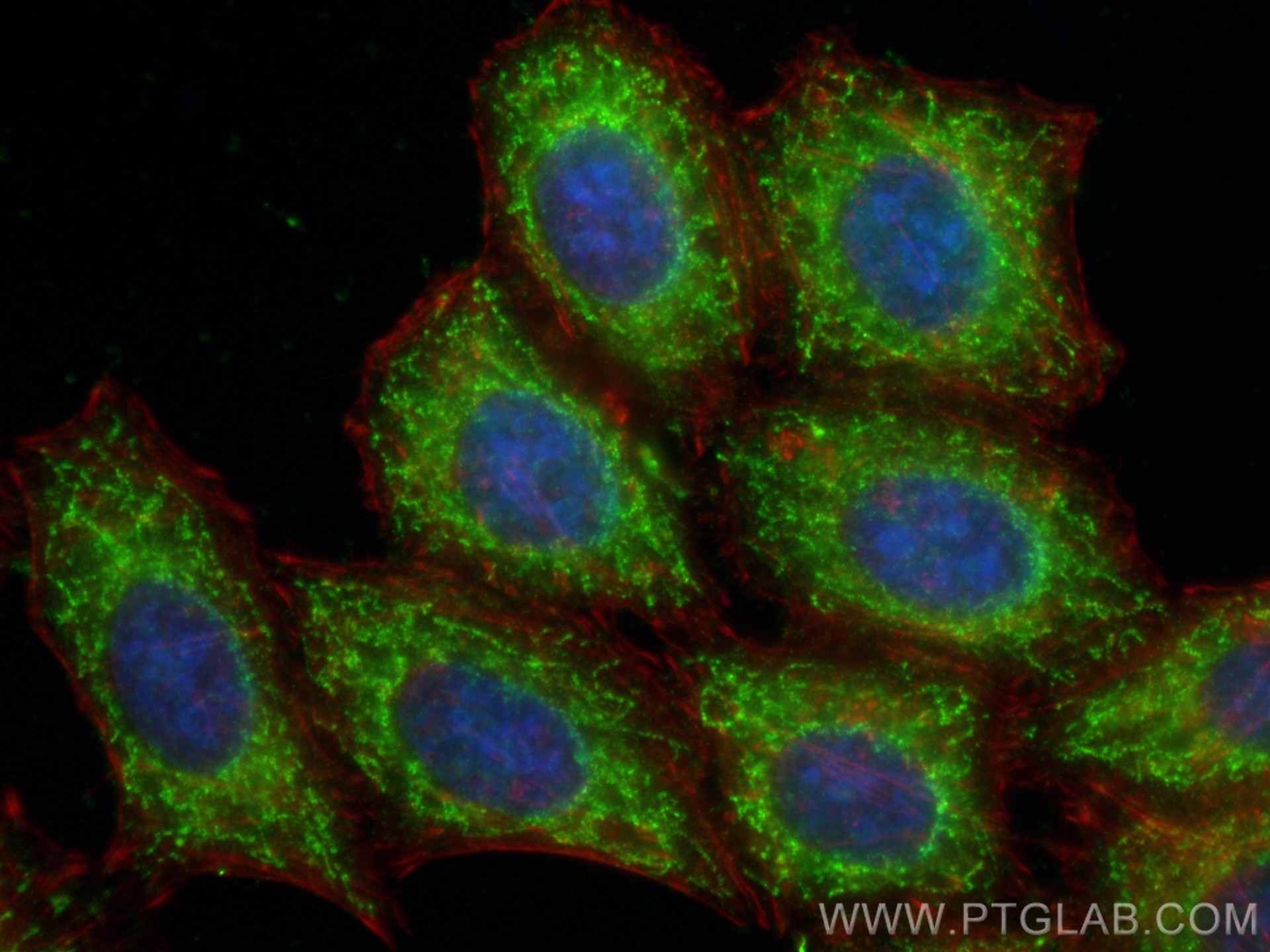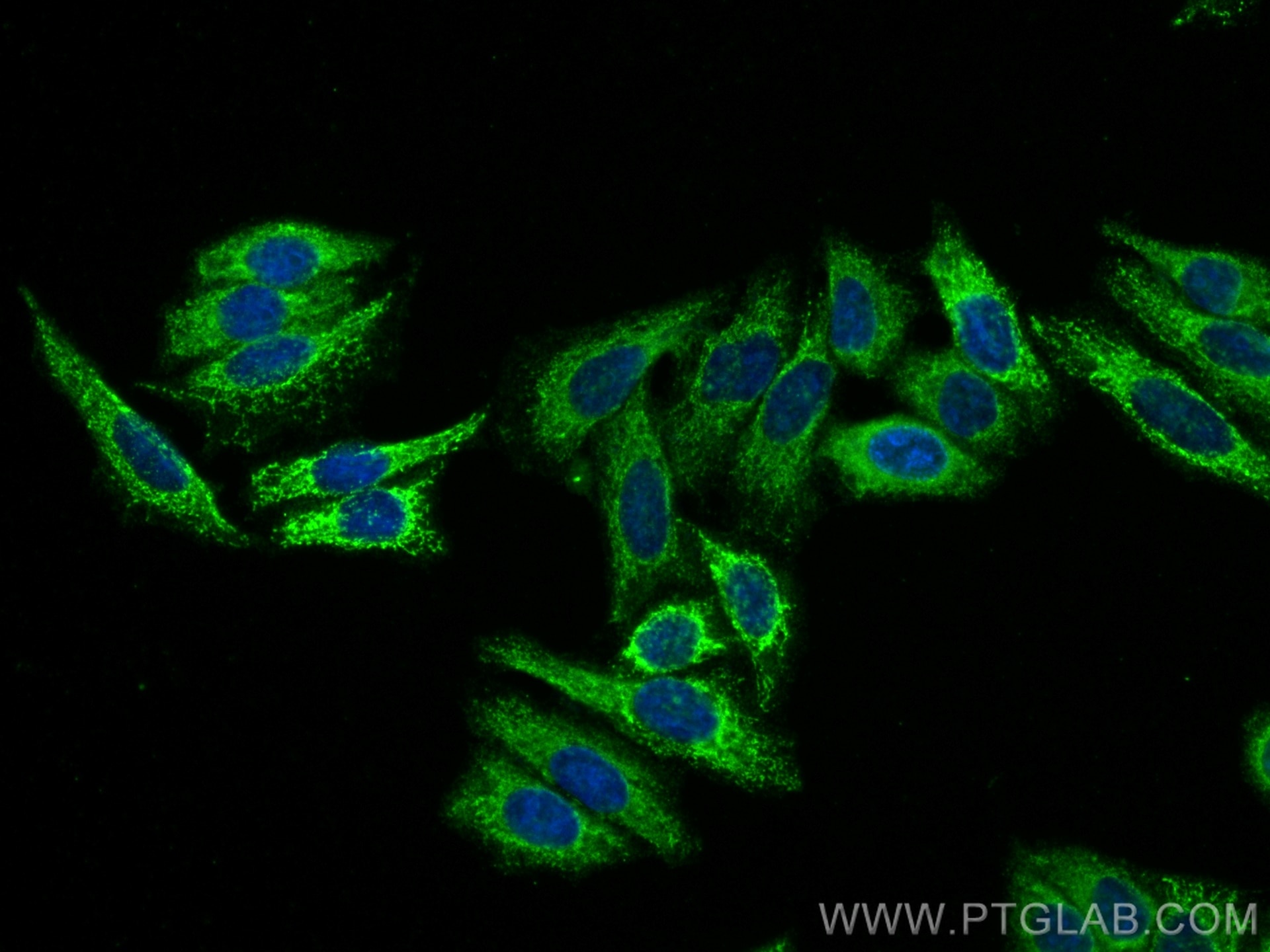- Phare
- Validé par KD/KO
Anticorps Monoclonal anti-mTOR
mTOR Monoclonal Antibody for IF, IHC, IP, WB, ELISA
Hôte / Isotype
Mouse / IgG2a
Réactivité testée
Humain, rat, souris et plus (3)
Applications
WB, PLA, IP, IHC, IF, ELISA
Conjugaison
Non conjugué
250
CloneNo.
1G11A3
N° de cat : 66888-1-Ig
Synonymes
Galerie de données de validation
Applications testées
| Résultats positifs en WB | cellules LNCaP, cellules HEK-293, cellules HeLa, cellules HepG2, cellules HSC-T6, cellules Jurkat, cellules K-562, cellules NCI-H1299, cellules NIH/3T3, cellules ROS1728, cellules THP-1, tissu cérébral de rat, tissu cérébral de souris |
| Résultats positifs en IP | cellules HeLa, |
| Résultats positifs en IHC | tissu de cancer du côlon humain, tissu de cancer du foie humain, tissu de cancer du sein humain il est suggéré de démasquer l'antigène avec un tampon de TE buffer pH 9.0; (*) À défaut, 'le démasquage de l'antigène peut être 'effectué avec un tampon citrate pH 6,0. |
| Résultats positifs en IF | cellules HepG2, cellules HeLa |
Dilution recommandée
| Application | Dilution |
|---|---|
| Western Blot (WB) | WB : 1:5000-1:50000 |
| Immunoprécipitation (IP) | IP : 0.5-4.0 ug for 1.0-3.0 mg of total protein lysate |
| Immunohistochimie (IHC) | IHC : 1:1000-1:4000 |
| Immunofluorescence (IF) | IF : 1:400-1:1600 |
| It is recommended that this reagent should be titrated in each testing system to obtain optimal results. | |
| Sample-dependent, check data in validation data gallery | |
Applications publiées
| WB | See 242 publications below |
| IHC | See 7 publications below |
| IF | See 6 publications below |
| IP | See 4 publications below |
Informations sur le produit
66888-1-Ig cible mTOR dans les applications de WB, PLA, IP, IHC, IF, ELISA et montre une réactivité avec des échantillons Humain, rat, souris
| Réactivité | Humain, rat, souris |
| Réactivité citée | rat, Chèvre, Humain, porc, souris, Hamster |
| Hôte / Isotype | Mouse / IgG2a |
| Clonalité | Monoclonal |
| Type | Anticorps |
| Immunogène | mTOR Protéine recombinante Ag28395 |
| Nom complet | FK506 binding protein 12-rapamycin associated protein 1 |
| Masse moléculaire calculée | 289 kDa |
| Poids moléculaire observé | 250-289 kDa |
| Numéro d’acquisition GenBank | NM_004958 |
| Symbole du gène | FRAP1 |
| Identification du gène (NCBI) | 2475 |
| Conjugaison | Non conjugué |
| Forme | Liquide |
| Méthode de purification | Purification par protéine A |
| Tampon de stockage | PBS avec azoture de sodium à 0,02 % et glycérol à 50 % pH 7,3 |
| Conditions de stockage | Stocker à -20°C. Stable pendant un an après l'expédition. L'aliquotage n'est pas nécessaire pour le stockage à -20oC Les 20ul contiennent 0,1% de BSA. |
Informations générales
MTOR, also named as FRAP1, FRAP, FRAP2 and RAPT1, belongs to the PI3/PI4-kinase family. MTOR is a Ser/Thr protein kinase that functions as an ATP and amino acid sensor to balance nutrient availability and cell growth. MTOR is kinase subunit of both mTORC1 and mTORC2, which regulate cell growth and survival in response to nutrient and hormonal signals. mTORC1 is activated in response to growth factors or amino-acids. mTORC2 is also activated by growth factors, but seems to be nutrient-insensitive. mTORC2 seems to function upstream of Rho GTPases to regulate the actin cytoskeleton, probably by activating one or more Rho-type guanine nucleotide exchange factors. mTORC2 promotes the serum-induced formation of stress-fibers or F-actin. MTOR has a calculated molecular mass of 289 kDa, and always can be detected at about 250 kDa due to some modifications (PMID: 14578359).
Protocole
| Product Specific Protocols | |
|---|---|
| WB protocol for mTOR antibody 66888-1-Ig | Download protocol |
| IHC protocol for mTOR antibody 66888-1-Ig | Download protocol |
| IF protocol for mTOR antibody 66888-1-Ig | Download protocol |
| IP protocol for mTOR antibody 66888-1-Ig | Download protocol |
| Standard Protocols | |
|---|---|
| Click here to view our Standard Protocols |
Publications
| Species | Application | Title |
|---|---|---|
Gastroenterology Nucleolar HEATR1 upregulated by mTORC1 signaling promotes hepatocellular carcinoma growth by dominating ribosome biogenesis and proteome homeostasis | ||
Mol Cell Lysosomal cyst(e)ine storage potentiates tolerance to oxidative stress in cancer cells | ||
Mol Cancer circEXOC6B interacting with RRAGB, an mTORC1 activator, inhibits the progression of colorectal cancer by antagonizing the HIF1A-RRAGB-mTORC1 positive feedback loop. | ||
Autophagy Periplocin suppresses the growth of colorectal cancer cells by triggering LGALS3 (galectin 3)-mediated lysophagy | ||
Nat Commun Location-specific inhibition of Akt reveals regulation of mTORC1 activity in the nucleus. | ||
J Clin Invest Up-regulated YB-1 protein promotes glioblastoma growth through an YB-1/CCT4/mLST8/mTOR pathway. |
Avis
The reviews below have been submitted by verified Proteintech customers who received an incentive forproviding their feedback.
FH Sun (Verified Customer) (01-05-2023) | strong band showed up around 200kDa region in HEK293T cells.
|
FH Macarena (Verified Customer) (10-07-2022) | excellent band. Very concentrated.
|
FH Rachel (Verified Customer) (05-24-2021) | Lovely antibody, very clean good siganl Cell lysates were run on JESS Simple Western
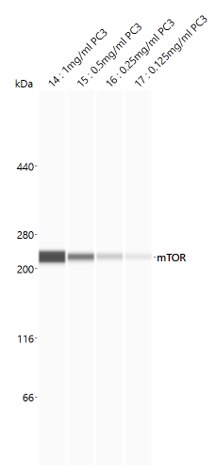 |
